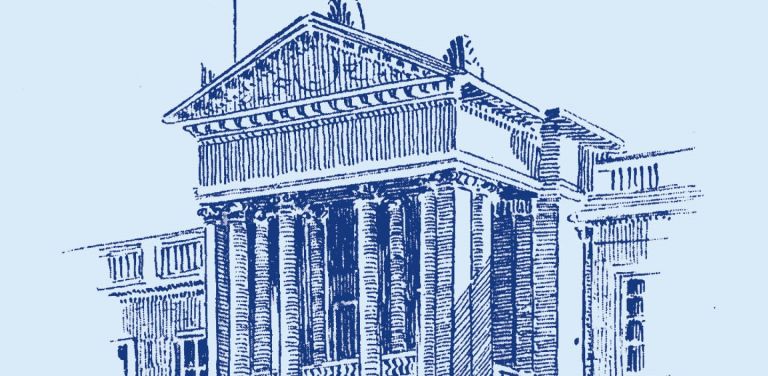Our story
Although NSW Treasury's responsibilities have shifted over the past 200 years, our role has stayed the same. We're here to manage the state’s main financial assets and debts, find ways to improve the economy, and help the government provide benefits to the people of NSW.
As Australia’s first and oldest government agency, NSW Treasury represents a lens on Australian history. Our story reflects the policies and decisions made by successive governments, public servants, NSW communities, entrepreneurs and dreamers all looking to build or create something better.
Our bicentennial celebration publication is a celebration of triumph, leadership and learning including: building suburbs; keeping the state solvent and funding one of the greatest icons in modern architectural history; and funding the government of the day to take over the provision of railways in the second half of the 19th century.
The information on colonial Treasury’s history does not look at the often-devastating impact colonial policies and actions had on First Nations people that have lived on the continent we now call Australia for thousands of years. Treasury remains committed to Reconciliation and economic policies that empower First Nations people and communities.
Our milestones and moments
Our newly launched book, Walking a Tightrope: Milestones and moments in the history of NSW Treasury edited by Paul Ashton is a bicentennial celebration publication that takes readers on a journey back through time – one that reflects upon the rich tapestry of NSW and acknowledges the intricate threads woven by our forebears.
It shows the indomitable spirit of many people and the enduring connections of Aboriginal peoples. Each of the 14 chapters tells a story that allows you to gain a crisper appreciation of far-reaching impacts of decisions made. We invite you to celebrate and explore the spirit, drive and determination of Aboriginal peoples, the Treasury, the colony and the State.
Read the digital version of the full text or download the PDF.View the interactive Walking a Tightrope publication
"As the 67th person entrusted with the stewardship of this institution, Walking a Tightrope has given me an opportunity to consider our State’s past. To celebrate achievements and extend our triumphs. To learn from errors and correct our path away from injustice. To see how we have changed and why.
This book is an example of complete storytelling: a look at our successes and our failures in key moments. Through it, I hope the next 200 years shine ever brighter"
The Hon Daniel Mookhey MLC, NSW Treasurer
Our beginnings
William Balcombe - our first Treasurer
Following an investigation into the administration and governance of the colony by British Commissioner Thomas Bigge, merchant William Balcombe (1779-1829) was appointed to the newly created role of Colonial Treasurer of New South Wales.
Balcombe’s legacy in establishing the Colonial Treasury ultimately laid the foundations for Treasury’s current role as the NSW Government’s principal economic and financial advisor.

Our first location
From a cottage to a condemned house to a colonial mansion to a grand sandstone headquarters to the top floors of skyscrapers, NSW Treasury has moved many times around the city of Sydney over the past 200 years.
In 1824 William Balcombe operated from the cottage of a former military paymaster located on the corner of Bent and O’Connell Streets. He lived upstairs with his wife and children, while Treasury business was conducted downstairs.
![Corner of O'Connell Street & Bent Street [a view], 1853 _ William Butler Simpson](/sites/default/files/styles/_medium/public/public%3A/2024-08/Treasury%20NSW%20Corner%20of%20O%27Connell%20Street%20%26%20Bent%20Street%20%5Ba%20view%5D%2C%201853%20_%20William%20Butler%20Simpson.jpgTreasury%20NSW%20Corner%20of%20O%27Connell%20Street%20%26%20Bent%20Street%20%5Ba%20view%5D%2C%201853%20_%20William%20Butler%20Simpson.jpg?itok=ippBaeLE)
State Library of NSW
A snapshot of our early days
John Thomas Bigge was appointed to commission an inquiry into the administration of the prison settlement in NSW, known as the Bigge Inquiry, in
The Bigge reports changed the way NSW was administered.
This led to William Balcombe (1779-1829) being appointed to the newly created role of Colonial Treasurer of NSW in October
Balcombe’s legacy in establishing the Colonial Treasury ultimately laid the foundations for Treasury’s current role as the NSW Government’s principal economic and financial advisor.
The discovery and early mining of gold in
and subsequent Gold Rush was one of the most transformative events and processes of Australia’s history, leading the start of 'responsible government'.
Treasurer Geoffery Eagar introduced legislation to set up the first Government Savings Bank of NSW, opened in
Eagar was responsible for ‘the creation of a powerful Treasury organisation’. And to ensure that ‘accountability, transparency, economic efficiency and effectiveness’ were to be the cornerstones of Treasury’s procedures.
Australia made its official transition to a new Western currency, shifting from the British system of pounds and shillings to one of dollars and cents in February
this marked a pivotal point in the nation’s history.









